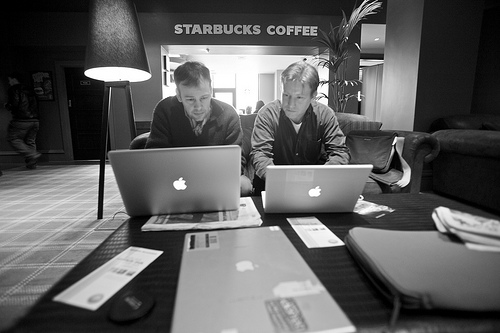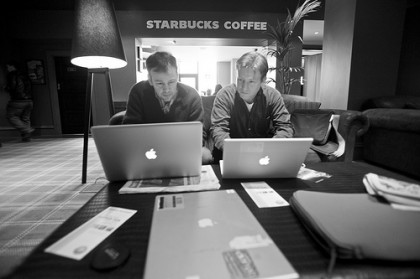Before you read this you’ll need a pen and a piece of paper…
OK. Draw a square. Now draw a triangle on top of the square. On the right hand side of the triangle, just on top, draw a rectangle. Now inside the first square you drew draw four other squares – but make sure they don’t touch each other, or the edges of the first square. In the bottom middle of the first square draw a rectangle, taller than it is wide. Pop a little circle half way up on the right hand side of the rectangle.
Done that?
What have you drawn?
Here’s the alternative, simpler and more effective way of doing it: Make me a picture of a house.
We’ve done this exercise countless times with people we’ve worked with over the years. Usually, out of a group of 10 people, maybe 2 or 3 will follow the first set of instructions and produce something that looks like a house. Most people follow the instructions to the letter, but don’t produce a picture that looks like anything recognisable. Clearly it’s not because they couldn’t draw a house… it’s because the instructions are ambiguous.
OK, so it’s a trivial example, but it has important implications for planning.
When you are building a plan you can choose to describe the journey in terms of ‘activities’ or ‘outcomes’.
Activity based plans are like the first set of house drawing instructions. You start at the beginning and work out the set of tasks that need to be done to achieve the end result. If you are really keen you might even draw out all of the activities on a Gantt chart, or issue people with a spreadsheet stuffed with tasks.
Outcome based plans are like the second statement. They start by describing the end result that you want to achieve and the key outcomes you expect along the way. The individual steps that you need to take to get there are left up to the person who is responsible for producing the output.
In our experience Outcome based plans win almost every time because…
- Everyone knows what the target looks like. With the simple set of instructions above, our experience is that they only result in a recognisable picture of a house around 30% of the time. For the person who wrote the instructions it was obvious that it was going to be a house, because that was the picture they had in their mind, but when you have to work out the goal from the instructions its much harder. When you plan using activities and tasks its really easy to think you have completely described what needs to be done, but its really really hard to actually (I’d argue impossible) to build a completely infallible plan. By describing a set of Milestone outcomes that need to be achieved along the way, everyone can understand what the goal is and you don’t just rely on your ‘instructions’ being interpreted correctly.
- The team can find creative solutions and different routes to the goal. When you plan using activities and tasks you map out a single route to the goal. There may be countless other ways to get there. People in your team will have their own experiences and ideas which will lead to better solutions. But, if you constrain people to a set of tasks you lose all of that. This especially important when things go wrong (and who has ever worked on a project where there wasn’t at least on slip up). If you define the outcomes, when things go wrong you give people the freedom to think on their feet and change the tasks they do to cope with the new situation. If you are in ‘task-world’ when things go wrong, everything has to stop while you define the new set of instructions.
- You can measure progress by Outcome Milestones achieved, rather than by the amount of work done. If you tried to follow the first set of instructions above you would have no idea of how close you were to actually producing the intended result. You could have measured how far through the set of instructions you were, but that’s about it. Having done 100% of the work means nothing unless you have produced 100% of the intended outcome. By tracking against Milestones which are tied to outcomes you know that every time you complete one you have made tangible progress towards your goal.
In essence if you communicate what the goal is, the tasks will choose themselves. If you just tell people what tasks to do, you risk missing the goal completely. Its why we built Milestone Planner to be outcome focussed. Each Milestone in the plan is a tangible outcome. When you share your plan with your team everyone can see what needs to be done, when it needs to be done by and who is responsible for it. That’s what Milestone Planner is all about.


